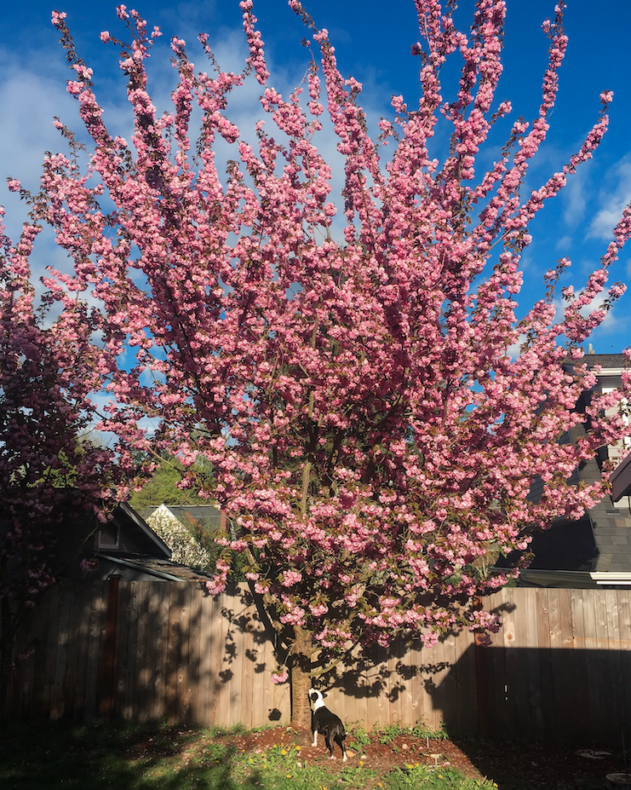
Usually, summer is the season for hiking, weddings, family vacations, and neglecting my houseplants and backyard. I’m used to coming home after 10 days away to parched calathea and a lawn full of dandelions. But this year, being home all the time means I am taking special care of my plant friends, because what does it say about me if I can’t keep them alive when I no longer have an excuse for my usual carelessness?
In return, they’ve taught me some things.
One: you can’t bloom all the time.
The orchid I found on the side of the road in 2016 was thriving; it bloomed in January, which I thought was a good omen. But once the pandemic hit, its flowers shriveled, which was clearly a bad omen. My always-wise husband reminded me that all plants have their time, and the flowers were done this time, but they would come back.
Two: Even the most resilient plants still need care.
A few years ago, my mother in law gifted me a cutting from Monster George, a pothos she’s had for decades, and he seemed unkillable. She took the cutting from her home in Connecticut, wrapped it in some wet paper towel and transported it in a ziplock baggie to brunch in Manhattan, where she handed it off to me. I flew him home, accidentally left him in my luggage for days, then finally planted him days later, and he still survived.
So when half George’s leaves yellowed this spring, I knew I’d messed up. I’d assumed he’d be fine no matter what, which accidentally translated into neglect. While I carefully watered some of my more fiddly plants and offered them prime “indirect bright light” real estate, I’d short changed Monster George. This is around the same time I realized my mantra had been “just get through the week” for about 8 weeks in a row, and that maybe it was time to stop ignoring my own needs.
Three: Change is hard to see from day to day, but over time, growth is evident.
My spider plant had babies, and I was worried I’d potted them in containers too large. But a month later, they’d nearly outgrown their pots, the same way I’d nearly outgrown my jeans after a month of eating Tim’s Cascade potato chips every day. (The plants got new pots; I stopped buying chips.)
Four: Where you put your energy will change over time.
For two weeks in the spring, our cherry trees transform from lifeless spindles into lavish white-pink tufts. Then they drop those petals, transforming yards and sidewalks into velvety carpets, so they can concentrate on growing leaves and — the main attraction! — cherries. Once the weather cools, it drops everything, resting until next season. I find it completely natural that the tree must concentrate on different things at different times; I would never call a cherry tree lazy for its inability to bloom and fruit concurrently. So why do I expect something different from myself?
Five: When an affliction takes hold in the population, you must quarantine and treat it to keep it from spreading.
In July, fungus gnats invaded. Initially, I did nothing, because I was in denial it would be a big problem. (Does this sound familiar?) After some lackluster attempts to manage the gnats, I resorted to locking the infested plants in the bathroom, and treating them with a mysterious substance a friend gave me. (He has very nice plants, so I will do anything he says.) Weeks later, two of the plants have come out of quarantine, and are now allowed to do normal plant stuff again, like being close to their other plant friends.
But don’t read into any of this too much. They’re just plants, after all.
This is wonderful, Jane! Thank you!
This just beautiful. Perhaps we need only look at nature to learn how to live. Sending you nothing but love from the Philippines. Take care!